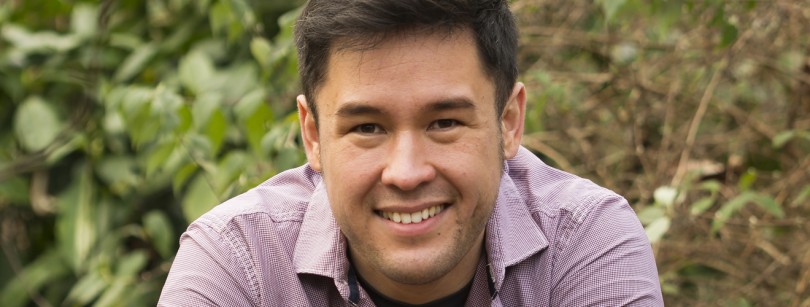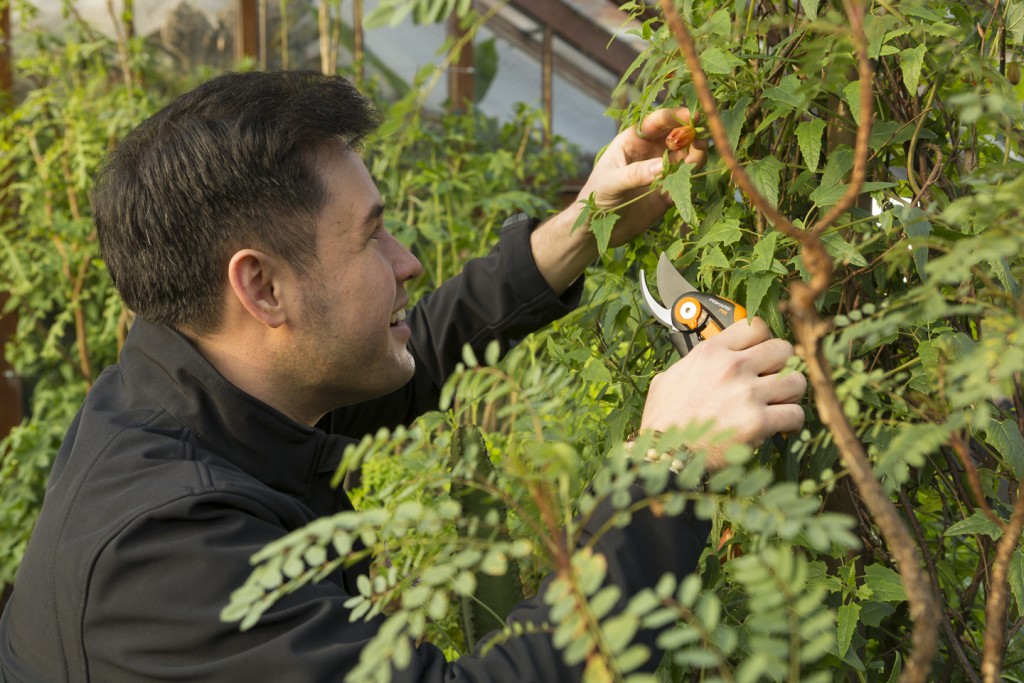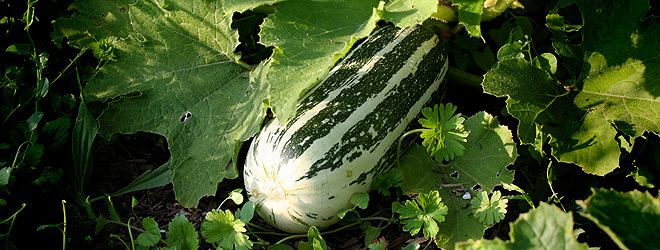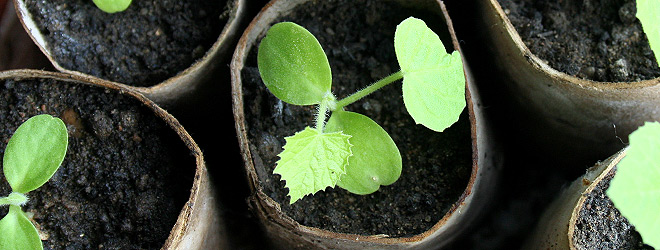James Wong is the nation’s favourite botanist, sprouting up regularly on Gardeners’ World, Gardeners’ Question Time, and on a whole host of other hort-related radio and TV shows. Seemingly unable to lie dormant, he has also penned four best-selling books and was about to sit down to begin writing his fifth before being rudely interrupted by our questions. We pull up a chair and talk hop pillows, candy floss berries and the joys of gin…
Morning James! So to start off, could you give me a bit of background to your career please?
So I grew up in Singapore. I was born in London, but I moved back here to do my degree. I’m a trained entobiologist – I did my studies at Kew. Entobiology is essentially the scientific study of how people use plants. I have had literally zero, formal horticultural training. I used to think it was a kind of drawback to not be a trained professional horticulturist, but then I realised it was nothing to be embarrassed about – quite the opposite. Coming from the scientific point of view, I have a very different set of ideas than I imagine a traditionalist would have, which can be a benefit. Horticulture is full of culture, it’s not necessarily full of science, so sometimes science gives you a different perspective. The fun thing is, the more people we get in this industry from different backgrounds, the more perspectives we get, and the richer horticulture is for that.
Who are your horticultural heroes?
I have quite a few actually, but more botanically related than horticulture. Norman Borlaug is one of my favourites… he’s the father of modern agriculture. He did most of his work in the middle of the 20th century, from the 1940s to the 1970s. His efforts in introducing modern agriculture methods and plant breeding around the world effectively saved a billion lives from starvation. We often talk about horticulture being about making window boxes pretty or mowing lawns, but the fact of the matter is horticulture is about what we eat, and horticulture saves lives because of that.
Another hero of mine is Roberto Burle Marx, a Brazilian, modernist garden designer from the 1960s. He took the whole idea of horticulture in Brazil, basically flipped it on its head and essentially invented modern garden design. Until that point, garden designers in Brazil were effectively trying to copy Europe. They were trying to create rose gardens in the middle of the rainforest… and roses don’t grow very well in that climate! And what he did for the first time is he thought, what will happen if we use native Brazilian plants – plants that we would consider weeds here – and can we flip them and make them beautiful? And make Brazilians proud of them and make them proud of their own heritage.
And then of course you have people like Diarmuid Gavin and Bob Flowerdew, my childhood heroes. The crazy thing is, I now get to work with them. Sometimes I do Gardeners’ Question Time and I’m standing next to Bob and I think, “Oh my god, it isn’t a hologram, it is actually a living, breathing Bob Flowerdew!”
So, a few years ago you had your series, Grow Your Own Drugs, which lead to you writing a couple of hugely successful books off the back of it. Do you have a favourite recipe from the show?
Oooh, gosh, I reckon the goji berry chicken stew has to be one of my favourites. It’s probably the one I make most often; it’s one I’ve been making since I was a little kid. Apart from being a remedy in itself, it also tastes good – it’s a food that I would eat even if I wasn’t ill, and I have it often. And you know, I had a tweet the other day that said, “I’ve just made your chicken soup and it’s great,” and I say, yes it is! If you are working at like 4am in the morning, testing out recipes the night before filming, you have to make sure for the hundredth time that it’s definitely the right amount, and you haven’t boiled it for the wrong amount of time or anything… I’m so concerned that they are actually going to work for people, so it’s great that you find that so many years later, someone actually bothered doing it and found it useful.
I seem to remember you making a hop stuffed pillow to aid sleep on one of the episodes. Do you know whether hops lose any of their sedative powers after being mashed and brewed? I can attest to nodding off after a bottle or two of home-brew. This may explain things…
I’m not really sure of the whole brewing process, but basically the bitter chemicals in hops are volatile, so that’s the reason why a brewery will smell of hops. I don’t think that they would lose many of them because the very fact that the beer still tastes of them, still smells bitter, still tastes bitter suggests that most of the chemicals remain intact.
What I don’t know is whether the chemicals work ingested in liquid form as opposed to being inhaled but the chances are you would be getting significantly large amounts of them. You may absorb them slightly slower because you will be absorbing them through the lining of your stomach as opposed to your nasal passages, so I guess you should.
I see. Have you ever tried growing your own booze?
Oh gosh, what have I done? I got quite interested in it for a while, but I found that in the UK it is significantly harder to do, and involves more kit, or at least that is my impression. I’ve made mead quite a few times, and I made wine out of pineapple skins, which is a traditional thing, and you know, 14 hours later it is ready. In Singapore, the temperatures are high which speeds up fermentation and I think that means that you need to worry less about the fermentation process going slightly awry. I’ve tried it a few times in the UK but I seem to get a secondary infection with whatever other yeasts or bacteria are floating around and I never get the same consistency, but maybe I just haven’t tried hard enough!*
Do you have your own allotment?
I have an allotment that is attached to my mum’s house! I live in a flat in central London and don’t have a garden. So when you hear of me talking about MY garden, it’s the one attached to my mum’s house because effectively, that’s what I treat it as. It’s the garden I commute to. It’s my allotment. There are no allotments in my part of London. When I first moved to where I am now, I thought that it must just be a case of waiting on a really long waiting list. But no, there are actually no allotments. However long I wait, there are no allotments. I live in Bayswater, and my mum lives in Croydon… It’s a long commute, but I manage to make it work.
So this is your testing station?
Yes, that’s it. My mum’s garden. She hates mowing lawns, but quite likes free vegetables, so I’ve dug up everything. And the bits I couldn’t dig up, I’ve got pots on. Traditionally, I have done all my testing there, but for my last book I managed to convince Sutton Seeds to dig up some of their land, and also the RHS to dig up part of Wisley for me to use and experiment on. I’ve managed to expand my testing empire out of my own garden!
So are you growing anything interesting at the moment?
Oh, what have I got, I’ve just dug up most of my crops, so I haven’t got anything particularly exciting that’s new that’s gone in, but in terms of non annuals, in terms of general crops, I’m testing out a whole bunch of things that I think are fun. I’m testing out yuzu for example which I’ve had good experiences with over the past 18 months or so. Yuzu is a relatively rare citrus variety – potentially hardy – from Japan which I’m having a lot of fun with. I’m testing out some sour cherry varieties which are quite fun. I’m also growing a lot of unusual brambles, so things that aren’t necessarily easy to classify as either blackberry or raspberry because there are quite a lot of different brambles there in their ancestry. Things like boysenberries I’m having fun with this year. So yeah, I’m looking forward to seeing what happens.
Shamefully, I’ve just been given a warning letter from my allotment association regarding the untidy state of my plot. Do you have any suggestions of low maintenance plants that might fill up a few scruffy corners?
So one of the things I’m really excited about and that I think would work quite well for booze-making is a Chilean guava. It’s a relative of the blueberry but tastes significantly better.
It’s an evergreen plant – it looks a little bit like box, so nice shiny small leaves and produces white scented flowers in summer – and then about this time of year, it’s covered with berries that look a bit like blueberries, but are dusty pink and white instead of being blue. Their flavour is kind of a bit like a cross between strawberries and candy floss… really intensely aromatic, much more so than blueberries and much sweeter. With this plant, there’s no need for pruning, it never goes leggy, produces fruit every year and, as long as you are not in a very cold part of the country, it’s totally hardy.
And I can make booze from it?
Yes, you can make guava-flavoured vodka, a bit like how you make sloe gin. Sugar, Chilean guava, vodka (not gin) and you’re good to go. It’s lovely!
So you’re writing a new book, any chance of a sneaky preview?
Sure… I’ve signed the contract so, yeah. I’m writing a book on nutrition from a plant’s perspective. So what we have recently – I mean very recently, within the last 20 years that scientists have noticed – is that the flavour of chemicals and also some of the nutrients in plants has been decreasing. And decreasing very rapidly over the last 50 to 60 years. The book basically addresses why that change has happened, what the causes of this could be, and it gives people simple tips and tricks on how to reverse that trend. So if you are at the supermarket or you are in the garden centre, how you can pick varieties, how you can grow them, how you can treat them to improve their nutrient content.
Sounds great! When’s it out?
Not for ages! I’ve got until next April to hand in the text, but it’s not published until April 2017. I haven’t written a single word yet…
You’d better get cracking, then. Especially when your publisher reads this…
So now that Monty has packed away his Gardeners’ World smock for the winter and Nigel has been dragged off to the dog kennel, there’s a large gardening hole in the TV schedule. Imagine I’m a TV producer. Pitch me the perfect gardening show…
Oh my god! (much laughter) I get asked to do that all the time! Well it’s not going to be a garden makeover! You know, without any exaggeration, I get a call at least about once a month about gardening makeovers. Either someone asking me to pitch one, or someone pitching one to me.
I think there is so much more to horticulture than that. I would do a show (well actually someone is already interested, but let’s see what happens) which is about how horticulture and knowledge of plants is not just about mowing lawns, is not just about sweeping up leaves, it’s fundamental to society; in fact, horticulture is the solution to most of the problems facing humanity in the 21st century. The UN are predicting a global famine which will kick in about 2030… apart from the actual yield of crops, the nutrition is declining, we have climate change.
And really the solution, or at least the solutions to all of those problems relies on plants, and arguably we rely on plants now as being crucial to society more than ever. I think we now need to start talking about plants, not as decorations for an outdoor room, and how to get the perfect lawn, but really as the future of humanity. So let’s see if that ever gets commissioned! (laughs)
So do you reckon there’s any scope for a segment on booze-making in the show?
Well brewing is one of the key areas actually. Brewing is key on how to produce a lot of the chemicals. So we use bacterial fermentation – in the same way that we use it to produce alcohol, you can use it to produce other interesting chemicals. Brewing is used to produce a number of things, everything from MSG to certain plastics, and bioplastics are going to be fundamental, potentially when oil runs out, to the future of producing goods. So yes, not necessarily brewing for producing alcohol, but actually, maybe alcohol could be a biofuel – we could burn that instead.
So you won’t be covering box blight?* *
Ho ho! Actually, I’m just writing an article on box blight! Specifically about Chilean guavas and how they look exactly like box in every way, except they are box blight resistant.
As the brand ambassador for Fiskars, what’s your favourite tool, James?
Secateurs I reckon! Got to be secateurs, because I use them the most often. I’m constantly snipping back things to maintain tidiness but also for harvesting, and also for improving flavour. One of things most people don’t realise is that pruning sounds counter-intuitive. If you want plants to grow, why are you cutting back? But pruning can make such a major difference in terms of the quality and flavour of pretty much every fruit and vegetable. I don’t waste time watering, I don’t waste time fertilising – if you do both those things you’ll get a higher yield of worse flavoured, worse nutrient-dense crops. But pruning is the one thing – if you take the time to thin out, thin some more, thin until you want to cry, then thin even more (which is my favourite Bob Flowerdew quote!), you really will get apples that are significantly better tasting, significantly larger and significantly higher in every nutrient.
And what would be your desert island veg? You can have three. And you may include fruit, if you like.
So the tomato has to be one of them, because tomatoes have it all. They have flexibility and diversity because you can use them in so many ways and they have so many different flavours. People think they know what tomatoes taste like, but there are so many different types; I don’t think you can ever say you dislike tomatoes. I’ve studied them in depth – this year I think I was growing 60 different types. And of course tomatoes are the one thing that taste completely different when you grow them yourself as opposed to when you buy them.
And er, I think another one – I know it’s very trendy but that’s not the reason why I’m growing it – is kale. Kale is ridiculously easy to grow. It’s the perfect ‘come again’ vegetable. I’ve had crops for almost 12 months from a single plant. It’s always in season, and you can constantly pick off the leaves from something like a cavolo nero and always have a steady supply, and there are very few crops where you can say that, and almost produce more crop than you can ever really eat. Kale does cook down, but if you slice it and use it raw in salads, two or three plants will produce more than you can really eat.
And what other thing?… CHILLIES! Chillies are kind of a perfect vegetable to grow in many ways, because they cross that boundary between spice and vegetable, so you don’t actually have to grow that many to be able to create a lot of meals out of them. So in my flat in London, the one thing I do have is window space, so I grow chillies as edible house plants and I always grow more than I can ever eat. Just one fruit can transform a curry from something quite miserable into something quite wonderful. People say that they can’t grow their own, but if I can grow them in my tiny one bedroom London flat, then anyone can.
I like chillies also. Do you have a favourite variety?
Hmm, I’ve got a few favourite varieties. I’m a big fan of regular Jalapeño. Jalapeño Summer Heat is a really good one for the UK. I also like some of the Thai bird chillies, just because they are so insanely spicy for the small amount you need. I think there’s one called Rooster Spur which I grow quite a lot, and there’s an Aji lemon, a Peruvian variety which actually has a citrusy lemon flavour.
One last question, and you can start writing that book. After a hard day’s gardening, what drink would you reach for?
Oh blimey! That’s like picking between my children! How can I pick a favourite?! I’m a big fan of gin, in particular the different infused varieties. I recently went to a bar in London – The Star at Night – that had over 100 varieties. I didn’t make a significant dent in trying them all, but I had a couple. There was a pink peppercorn one – pink peppercorns work amazingly well in gin. Who would’ve thought?
Cheers James!
*We’ve sent him a copy of our book, so expect to hear of a perfectly executed Tepache next time we catch up.
**A long standing joke among certain viewers of Gardeners’ World. See Twitter’s Sara Venn and #shoutyhalfhour for details…
James works with Fiskars to inspire today and tomorrow’s gardeners. From the traditional gardener to the converted urbanite, he encourages new and seasoned gardeners to get growing.
Go here to find out more…
http://www.fiskars.co.uk/jameswong









